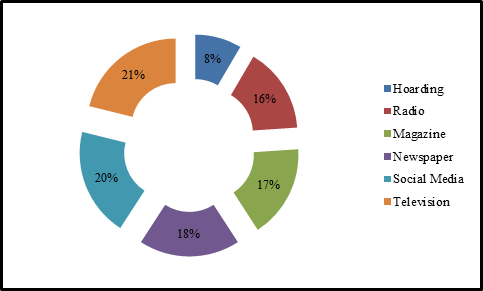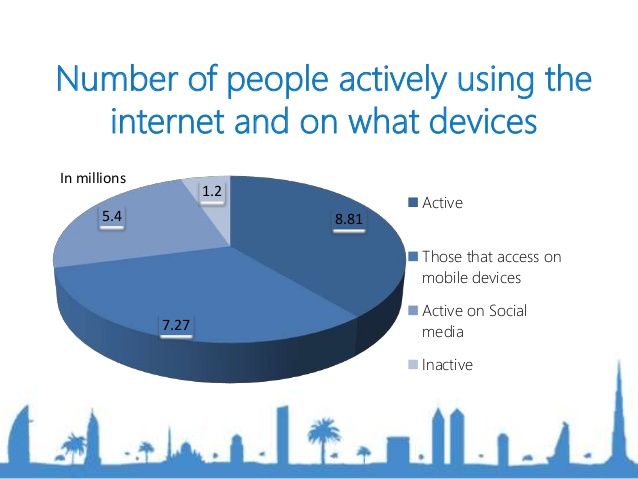The United Arab Emirates is one of the countries in the Middle East that have experienced massive development in information technology over the recent past. According to Guzzetti and Mellinee, the country has had a massive infrastructural development in the communication sector.1 People living in this country have access to information through various sources such as the mass and social media platforms. The latest technologies in the information sector have transformed the media trends. Harrison says that unlike in the past where media stations defined the content that was presented to the public because they fully dominated the sector, the emerging technologies have made it possible for the public to determine the content that is presented to them.2
In the United Arab Emirates, media broadcasting infrastructure has experienced massive development over the recent past. The country has made positive steps towards having a media that is independent of tight government control. Inasmuch as the government still owns a number of television and radio stations, Harrison notes that most of the media stations currently operating in the United Arab Emirates are privately-owned.3 These privately owned media stations have the freedom to choose the kind of content to present to the public as long as they adhere to the set rules and regulations. These stations shape politics and culture in this country because they are independent of state’s close control. The statistics below shows the main sources of information among the residents of this country.

The current development of ICT infrastructure has made it possible for sharing of knowledge and information to go beyond the conventional media. The emergence of social media especially has made it possible for people to share messages in platforms such as Facebook, Twitter, YouTube, LinkedIn, and many other social media platforms. The internet has made it easy for people to access information that they need whenever they need it. The figure below shows the number of people actively using the internet in this country.

When mapping digital media consumption in the United Arab Emirates, it is clear that there is an upward trend in terms of the number of people who can now access the internet through various platforms. Most of the users of the internet are in the urban setting. It is also true that people with higher academic qualifications and higher social class are more likely to use the internet than those who are semi-illiterate or those from poor families.6
According to McGurren, digital media is not only shaping the politics of this country but it is also playing an important role in enhancing creativity in the country.7 People get to share ideas and through that, they are able to enhance their skills in various fields. The emerging technologies have given rise to media preferences where people only focus on media sources that they find relevant. When one needs some form of entertainment, they have platforms that are custom-made for entertainment. Other platforms are meant to offer academic, commercial, legal, or numerous other contents that different sections of the society may need.
According to McGurren, user-generated content available in the digital media has given rise to digital activism where people use platforms such as Facebook, Twitter, and YouTube to champion for what they believe is right8. The ease with which people can share their feelings has created political diversity in the United Arab Emirates. The government has tried to come up policies, laws, and regulations to ensure that the political atmosphere in the digital platform is controlled. However, Katodrytis and Mitchell say that digital gate-keeping is a complex problem because it is almost impossible to silence the masses.9 The power to communicate and to share ideas has been taken away from the government and corporate agencies and handed over to the masses. Government interference with the media is significantly going down because it is now possible for people to get information that is withheld by the mass media stations.
Media funding is another factor that has helped in transforming the digital media map in the United Arab Emirates. Most of the media stations are keen on earning income from their activities. They can only earn income if they carry content that masses consider relevant. As such, media today is forced to listen to the demands of the people and carry content that is relevant to them. The audience has several choices to make and will only visit channels that they believe are truthful, bold, trustworthy, and thorough when presenting contents.
Social and cultural diversity is another significant factor that is defining the digital media in the country. According to Mendelson, the United Arab Emirates has been attracting immigrants from various countries around the world looking for better employment opportunities than what they have in their home countries.10 In a city such as Dubai, there are more immigrants than the local Emirati nationals. It means that the country is culturally diversified. Digital media offers people residing in this country opportunity to choose the content they want to watch despite the high level of diversity. The digital take-up has drastically increased, not only because of the advancement made in the field of information technology, but also because of the increasing diversity caused by the increase in the level of immigration into some of the major cities such as Dubai and Abu Dhabi.
It is important to note that the changing trends in the digital media have had massive impact on journalism. Newsrooms are now focused on finding ways to always be ahead of the social media in reporting. Most of the media stations have had to station their reporters strategically within various parts of the country to ensure that they get the news before it can be picked up by the social media. Investigative journalism has particularly become very critical to media stations because it is what differentiates conventional media from social media platforms.11 The main advantage that the mass media platforms have over the social media platforms is that most of their contents are still trusted. Whatever information that people gather from the social media platform, they still prefer to confirm it using the mass media such as leading television channels. Based on the trends that have been witnessed over the recent past, it is clear that media tomorrow will be dominated by the digital media. The continued development in the field of information technology and the desire of the audience to have custom-made media sources may render mass media stations less import in the near future.
Bibliography
Guzzetti, Barbara, and Lesley Mellinee. Handbook of Research on the Societal Impact of Digital Media. New York: Cengage, 2016.
Harrison, Dew. Handbook of Research on Digital Media and Creative Technologies. Hoboken: Wiley, 2015.
Katodrytis, George, and Kevin Mitchell. UAE and the Gulf: Architecture and Urbanism Now. Hoboken: Wiley, 2015.
McGurren, Julie. Gender Considerations and Influence in the Digital Media and Gaming Industry. London: McMillan, 2014.
Mendelson, Josephine. Social Media Is Bullshit. New York: St. Martin’s Press, 2012.
Footnotes
- Barbara Guzzetti and Lesley Mellinee, Handbook of Research on the Societal Impact of Digital Media (New York: Cengage, 2016), 44.
- Dew Harrison, Handbook of Research on Digital Media and Creative Technologies (Hoboken: Wiley, 2015), 48.
- Ibid, 51.
- Ibid, 56.
- Guzzetti and Mellinee, 54.
- Ibid, 61.
- Julie McGurren, Gender Considerations and Influence in the Digital Media and Gaming Industry (London: McMillan, 2014), 78.
- Ibid, 83.
- George Katodrytis and Kevin Mitchell, UAE and the Gulf: Architecture and Urbanism Now (Hoboken: Wiley, 2015), 82.
- Josephine Mendelson, Social Media Is Bullshit (New York: St. Martin’s Press, 2012), 41.
- Ibid.
